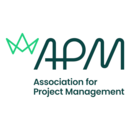Risk management expectations in projects
The foundation of a project: How do you set a project off on the right track?
Projects are happening all the time across the world. Delivering any project successfully – regardless of size, cost or nature – means it must be built with the right foundation. Effective risk management plays an important part and is necessary for a successful project.
Estelle Detrembleur is Associate Director at Mace, with over 20 years’ experience working with project-driving initiatives; predominantly within the area of environment and technology.
We spoke with her about some of the most important considerations when attempting to manage risk at the start of a project:
What are the risk management expectations?
Client and stakeholders’ expectations need to be considered as early as possible in the project management life cycle. Risk management expectations depend on the complexity of the project as well as the level of risk management requirements for the project. Consider whether this affects governance and the management plans (i.e. do you need a risk executive committee or other committees to assist in reviewing the risks on the projects), as well as how often risks are reviewed at what level and how they are reported.
What do you know about risk and is there capability within the team?
Establish the risk culture from top down and bottom up and train your team to have a risk management approach. Risk management is not for everyone, so find those that like it.
Do you have the resources?
As risk management matures throughout the project, skill set and resources evolve. Prepare a resource plan against the schedule. Develop a training programme and find a risk champion to support team members during the delivery of the programme.
What are the project objectives, risk appetite and tolerance?
The objectives of the project or programme are linked with the three main project risk types: cost, schedule and performance. When talking about risk appetite and tolerance, it’s important to understand the amount of risk the project or programme is willing to accept to achieve its objectives; this is the risk appetite. The risk tolerance is the acceptable deviation from the project or programme risk appetite.
Project professionals need to manage risk considerations at the beginning to support the project plans and objectives, such as understanding the risk management principles and processes.
Further Information
Estelle is a committee member of APM’s Specific Interest Group (SIG) on Risk and is also an accredited Risk Practitioner through APM. If risk management is your specialism or an area you’d like to learn more about, you can follow or volunteer with APM’s Risk SIG.
You can read about the different categories of risk management, the risk processes and access additional risk resources on APM’s What is risk management? page.
This article first appeared on the APM news and blog as "The foundation of a project: How do you set a project off on the right track?' on August 24, 2022.
--Association for Project Management
Related articles on Designing Buildings
- APM articles.
- Contingency plan.
- Design risk management.
- Interface risk in construction.
- Non-technical risk.
- Principles of prevention.
- Project risks and programme risks.
- Retained risk.
- Risk assessments and method statements.
- Risk assessment.
- Risk feedback.
- Risk mapping.
- Risk management
- Risk management in building design and construction.
- Risk register.
Featured articles and news
Construction Skills Mission Board launch sector drive
Newly formed government and industry collaboration set strategy for recruiting an additional 100,000 construction workers a year.
New Architects Code comes into effect in September 2025
ARB Architects Code of Conduct and Practice available with ongoing consultation regarding guidance.
Welsh Skills Body (Medr) launches ambitious plan
The new skills body brings together funding and regulation of tertiary education and research for the devolved nation.
Paul Gandy FCIOB announced as next CIOB President
Former Tilbury Douglas CEO takes helm.
UK Infrastructure: A 10 Year Strategy. In brief with reactions
With the National Infrastructure and Service Transformation Authority (NISTA).
Ebenezer Howard: inventor of the garden city. Book review.
The Grenfell Tower fire, eight years on
A time to pause and reflect as Dubai tower block fire reported just before anniversary.
Airtightness Topic Guide BSRIA TG 27/2025
Explaining the basics of airtightness, what it is, why it's important, when it's required and how it's carried out.
Construction contract awards hit lowest point of 2025
Plummeting for second consecutive month, intensifying concerns for housing and infrastructure goals.
Understanding Mental Health in the Built Environment 2025
Examining the state of mental health in construction, shedding light on levels of stress, anxiety and depression.
The benefits of engaging with insulation manufacturers
When considering ground floor constructions.
Lighting Industry endorses Blueprint for Electrification
The Lighting Industry Association fully supports the ECA Blueprint as a timely, urgent call to action.
BSRIA Sentinel Clerk of Works Training Case Study
Strengthening expertise to enhance service delivery with integrated cutting-edge industry knowledge.
Impact report from the Supply Chain Sustainability School
Free sustainability skills, training and support delivered to thousands of UK companies to help cut carbon.
The Building Safety Forum at the Installershow 2025
With speakers confirmed for 24 June as part of Building Safety Week.
The UK’s largest air pollution campaign.
Future Homes Standard, now includes solar, but what else?
Will the new standard, due to in the Autumn, go far enough in terms of performance ?
BSRIA Briefing: Cleaner Air, Better tomorrow
A look back at issues relating to inside and outside air quality, discussed during the BSRIA briefing in 2023.
Restoring Abbotsford's hothouse
Bringing the writer Walter Scott's garden to life.
Reflections on the spending review with CIAT.




























Comments